![]()
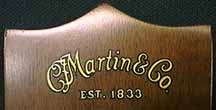

In 1920, Martin started making ukuleles in Hawaiian koa wood. These instruments had a brighter, crisper sound, more like the Hawaiian made ukuleles. Martin continued making koa ukuleles until 1940, when World War II made it extremely difficult to get the wood from Hawaii. Today, Martin koa ukuleles sell for as much as $2000 for a 2K, $4000 for a 3K and $10,000 for the Holy Grail of ukuleles, the 5K.


Left, Richard Konter with his famous 1K Martin ukulele. Right, The Konter uke that flew over the North Pole, now on display at the Martin museum.
Martin ukuleles were in highest production from 1916 to the 1930's (hitting their peak in 1926, with over 14,000 made), at which time Hawaiian music and Tin Pan Alley were extremely popular, and in the late 40s and 50s, as servicemen came back from Hawaii (almost 12,000 were made in 1950). They were manufactured in quantity through the mid 60s, but demand fell off sharply in the late 60s, Tiny Tim notwithstanding. By the mid 70s, Martin had stopped making ukuleles except by special order. Even today, you can special order a Martin ukulele, but a simple Style 0 will cost well over $1000, much higher then the price of a vintage instrument. Today, Martin makes the "Backpacker Uke"; a funny looking and certainly not up to old Martin standards, ukulele made in Mexico that sells for about $200 retail. They also make a modern version of the Style 0, also made at their factory in Mexico. But for a little more, you can find yourself an old Martin Style 0, a wonderful ukulele that will start you on your way to uke heaven (check out our vintage instrument links).
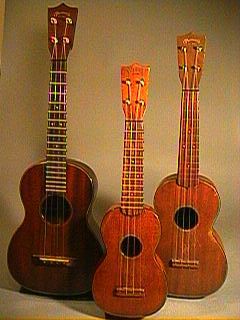
Martin ukuleles are considered by many to be the finest ever made for craftsmenship and sound and a close look at a Martin ukulele will show their attention to detail. Demand for older Martin ukes has increased dramatically in recent years, with some older fancy models selling in the thousands of dollars. The Hawaiian koawood models are more collectible than mahogony models, as there were much fewer of them made. A quick look on Ebay will give you an idea of what they are going for.
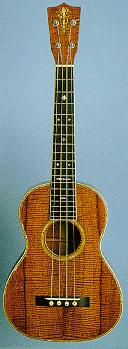
A rare Style 5K tenor.
Martin made ukes in five different models: Style 0, Style 1, Style 2, Style 3 and Style 5. Nobody is quite sure what happened to Style 4, but apparently there never was one. You can see the difference in these models below. Styles 0, 1 and 2 were very similiar, but with more binding as the model had a higher number. Styles 3 and 5 were primarily for professional, with much more binding, fancy inlay in the neck and headstock, and a fret board that came all the way down to the soundhole.
Koa ukuleles were also in the Martin production line and were very popular in the 20s and 30s. Koa is a native wood of Hawaii and was the regular wood for Hawaiian ukulele manufacturers. The koa ukuleles were identical to the mahoganey ukuleles in size and trimmings, the only difference being the substitution of koa wood. Koa ukuleles were listed in Martin catalogues with a K added to the style. In 1920, Styles 1, 2 and 3 were added to the Martin line. The 5K, Martin's most expensive uke, was first made in 1922 (at $50 each, quiet an expense in those days). By the mid 30s, Martin had stopped making koa Styles 1, 2 and 3. At the outbreak of World War II Martin dropped the 5K, probably because Koa wood was no longer easily obtainable. In 1941, Martin made a mahoganey version of the Style 5, but this was dropped from the Martin line by 1943.
There are several ways to date your Martin ukulele. Martin put a stamp on the back of the peghead until 1933 and peghead decals first appeared in 1932, so occasionally you will find a ukulele with both the stamp and decal. Bar frets were generally used until 1934, afterwhich they used T-frets. There is a stamp on the inside of the body that, before 1962, reads "C.F. Martin & Co., Nazareth, PA". In 1962, Martin added "Made in USA" to this stamp. Other ways to date them are the inlays on the fingerboard, with early fancy models having diamond shaped inlays and the newer models having small round dots.
Martin also made ukuleles for other companies, such as Oliver Ditson, Montgomery Ward and Belltone. Below are two Style 3 ukuleles; on the left is the regular Martin uke and on the right is the special Oliver Ditson uke. Notice the different body shape...
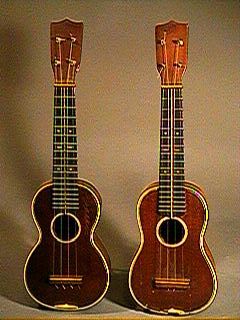
As has been noted above, Martin ukuleles were split up into different models, which are differentiated by their bindings. Here are some close-up shots of Martin bindings for (top row) Style 1 (on the left is a tenor model with the pre-1933 rosewood binding and on the right is a concert model with the tortoise shell binding) and (bottom row) Style 2 & Style 3. Notice how the soprano size Style 3's fretboard extends to the soundhole:
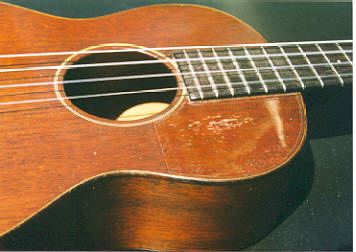
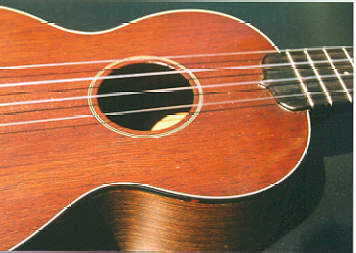
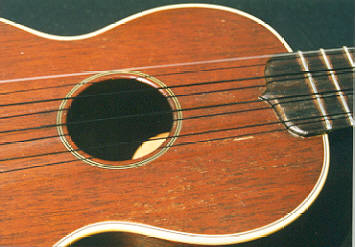
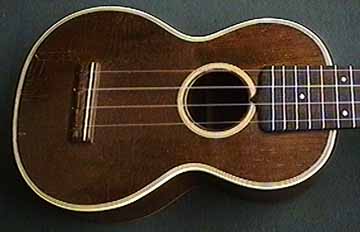
Throughout the 20s and 30s, Martin koa ukuleles were very popular. Here is a Style 2K and a Style 2...
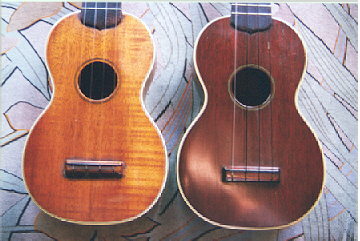
For more information on C.F. Martin & Co., go to their web site.
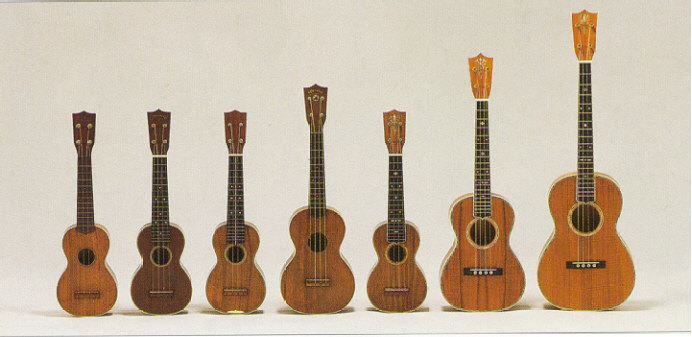
A lineup of VERY rare Martin ukuleles from the Tsumura collection (from left to right):
2K, 3M, 3K, 2K concert, 5K, 5K tenor, and a 5K baritone.

There are several sources for this page, including the Martin Guitar web site; Mike Longworth, author of "Martin Guitars: A History"; a magazine article by Bob Brozman, Jim Beloff's most wonderful book, The Ukulele: A Visual History, and the 1934 Martin Guitar retail catalogue.
A big mahalo to The Ukulele Diner and Mandolin Brothers for allowing us to use several of their ukuleles.
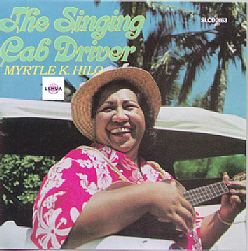
Home | Uke Players
| Beautiful Ukes | Uke History
| Martin Ukes | Kamaka Ukes |
Kamaka Tour | Uke Friends | Brudda IZ | Uke Music
![]()